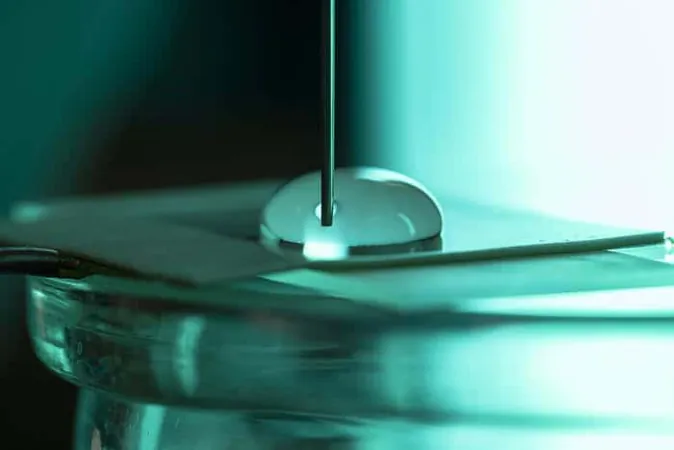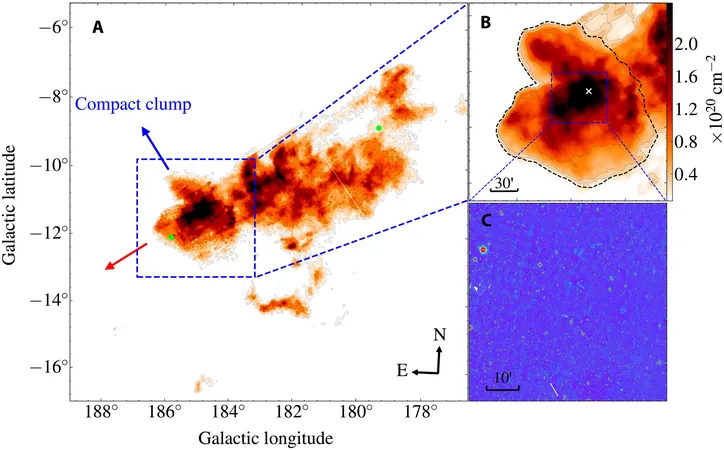
Shocking Discoveries: How Sliding Water Droplets Could Revolutionize Energy Harvesting!
2025-04-08
Author: Daniel
In an astonishing new study, researchers from RMIT University and the University of Melbourne in Australia have revealed a groundbreaking phenomenon: water droplets that stick to surfaces before unsticking themselves can generate an electric charge. This previously unexplored electrical activity, known as the depinning phenomenon, could significantly improve the efficiency of energy-harvesting devices.
The researchers' findings mirror concepts from traditional electrification methods—specifically, slide electrification, which occurs when a liquid transitions from a wet to a dry state. However, the team was surprised to discover that the reverse process, transitioning from dry to wet, also contributes to electric charge generation. “Our results show that something as simple as water moving on a surface reveals fundamental physical phenomena that remain poorly understood,” asserted Peter Sherrell, co-leader of the research.
The charging mechanism is particularly significant during moments when water droplets temporarily stick to a surface. Joe Berry, the team’s fluid dynamics expert, highlighted this unique insight: “By designing surfaces with tailored structures or chemistries, we could either minimize this charge for scenarios where it's detrimental—like in fuel handling—or maximize it in applications such as enhancing the speed of chemical reactions on catalyst surfaces. This advancement could lead to next-generation battery technology.”
In their meticulous study, the research team conducted over 500 experiments to observe the depinning effect. They designed a sophisticated experimental setup that allowed them to manage the motion of water droplets on Teflon surfaces, measuring the electrical charge variations associated with sticking and slipping motions. Their findings indicated that the most significant charge change—from 0 to 4.1 nanocoulombs—happened during the initial contact between water and the surface. After this peak, the charge fluctuated between 3.2 and 4.1 nanocoulombs throughout continued wetting and drying cycles.
The research was ignited by a simple yet profound question posed by Berry: was it feasible to harvest electricity from raindrops? From this inquiry, the project expanded, leading to intensive collaboration that involved several students before PhD candidate Shuaijia Chen took the lead in creating the experimental setup.
Despite the complexity of the experiment, one of the main challenges was the initial lack of understanding of the phenomenon being measured. Berry noted that designing the precise protocol to repeatedly generate the observed charging effect was another significant hurdle.
The implications of this research are enormous. Understanding how electric charge is generated from liquid flows across surfaces is crucial, especially in the evolving landscape of renewable fuels, such as hydrogen and ammonia, which are integral to achieving net-zero emissions. Current mitigation strategies to manage charge build-up in traditional fuels may not apply effectively to these new fuel types. The knowledge gained from this study could foster the development of advanced coatings designed to manage electrical charge, potentially transforming fuel handling and safety.
The researchers at RMIT and Melbourne are eager to explore this stick-slip phenomenon further with different liquids and surfaces. They are also looking to collaborate with industry partners to translate their findings into real-world applications. Sherrell emphasized, “Our primary goal now is to not just observe but to control the charging events, optimizing them for beneficial uses or minimizing them when harmful. While we acknowledge that we are at the beginning of this journey, every step we take is crucial for future chemical and energy applications.”
Stay tuned as we track the progress of this remarkable discovery and its potential to reshape the future of energy harvesting!





 Brasil (PT)
Brasil (PT)
 Canada (EN)
Canada (EN)
 Chile (ES)
Chile (ES)
 Česko (CS)
Česko (CS)
 대한민국 (KO)
대한민국 (KO)
 España (ES)
España (ES)
 France (FR)
France (FR)
 Hong Kong (EN)
Hong Kong (EN)
 Italia (IT)
Italia (IT)
 日本 (JA)
日本 (JA)
 Magyarország (HU)
Magyarország (HU)
 Norge (NO)
Norge (NO)
 Polska (PL)
Polska (PL)
 Schweiz (DE)
Schweiz (DE)
 Singapore (EN)
Singapore (EN)
 Sverige (SV)
Sverige (SV)
 Suomi (FI)
Suomi (FI)
 Türkiye (TR)
Türkiye (TR)
 الإمارات العربية المتحدة (AR)
الإمارات العربية المتحدة (AR)